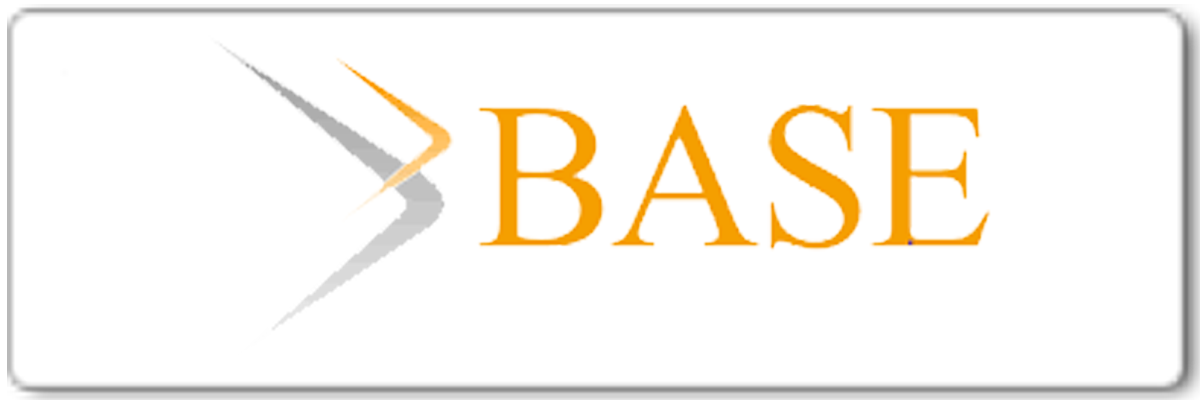Web-Based Simulation on Physics Learning to Enhance Digital Literacy Skill of High School Students
Abstract
Keywords
Full Text:
PDF (English)References
Veloo, A., Nor, R., & Khalid, R. (2015). Attitude towards physics and additional mathematics achievement towards physics achievement. International Education Studies, 8(3): 35-43.
Dębowska, E., & Greczyło, T. (2017). Role of Key Competences in Physics Teaching and Learning. In Key Competences in Physics Teaching and Learning (pp. 3-9). Springer, Cham.
Jones, G. (2017). Competence and Understanding—A Personal Perspective. In Key Competences in Physics Teaching and Learning (pp. 11-24). Springer, Cham.
Zheng, B., Yim, S., & Warschauer, M. (2018). Social media in the writing classroom and beyond. The TESOL Encyclopedia of English Language Teaching, 1-5.
Larson, L. C., & Miller, T. N. (2011). 21st century skills: Prepare students for the future. Kappa Delta Pi Record, 47(3): 121-123.
Saavedra, A. R., & Opfer, V. D. (2012). Learning 21st-century skills requires 21st-century teaching. Phi Delta Kappan, 94(2): 8-13.
Tang, C. M., & Chaw, L. Y. (2016). Digital Literacy: A Prerequisite for Effective Learning in a Blended Learning Environment?. Electronic Journal of E-learning, 14(1): 54-65.
Rodríguez-de-Dios, I., & Igartua, J. J. (2018). Skills of digital literacy to address the risks of interactive communication. In Information and Technology Literacy: Concepts, Methodologies, Tools, and Applications (pp. 621-632). IGI Global.
Etkina, E., & Planinšič, G. (2015). Defining and developing “critical thinking” through devising and testing multiple explanations of the same phenomenon. The Physics Teacher, 53(7): 432-437.
Husain, C. (2014). Pemanfaatan Teknologi Informasi dan Komunikasi dalam Pembelajaran di SMA Muhammadiyah Tarakan. Jurnal Kebijakan dan Pengembangan Pendidikan, 2(2).
Pearlman, B. (2010). Designing new learning environments to support 21st century skills. 21st century skills: Rethinking how students learn, 116-147.
George-Palilonis, J., & Watt, T. (2018, October). Professor Garfield’s 21st Century Digital Literacy Project: Supporting K-5 Teachers in their Digital Literacy Instructional Efforts. In E-Learn: World Conference on E-Learning in Corporate, Government, Healthcare, and Higher Education (pp. 1105-1114). Association for the Advancement of Computing in Education (AACE).
Aesaert, K., Van Nijlen, D., Vanderlinde, R., Tondeur, J., Devlieger, I., & van Braak, J. (2015). The contribution of pupil, classroom and school level characteristics to primary school pupils' ICT competences: A performance-based approach. Computers & Education, 87: 55-69.
Mohammadyari, S., & Singh, H. (2015). Understanding the effect of e-learning on individual performance: The role of digital literacy. Computers & Education, 82: 11-25.
Chen, C. H. (2014). An adaptive scaffolding e-learning system for middle school students’ physics learning. Australasian Journal of Educational Technology, 30(3).
Chandra, V., & Watters, J. J. (2012). Re-thinking physics teaching with web-based learning. Computers & Education, 58(1): 631-640.
Renata, B., & Jana, M. (2012). Learning and Teaching with Technology E-learning as a Motivation in Teaching Physics. Procedia-Social and Behavioral Sciences, 64: 328-331.
Srisawasdi, N. (2012). The role of TPACK in physics classroom: case studies of preservice physics teachers. Procedia-Social and Behavioral Sciences, 46: 3235-3243.
Hilliges, O., Kim, D., Izadi, S., Molyneaux, D., Hodges, S. E., & Butler, D. A. (2016). U.S. Patent No. 9,529,424. Washington, DC: U.S. Patent and Trademark Office.
Enyedy, N., Danish, J. A., Delacruz, G., & Kumar, M. (2012). Learning physics through play in an augmented reality environment. International journal of computer-supported collaborative learning, 7(3): 347-378.
Cai, S., Chiang, F. K., & Wang, X. (2013). Using the augmented reality 3D technique for a convex imaging experiment in a physics course. International Journal of Engineering Education, 29(4): 856-865.
Chang, K. E., Chen, Y. L., Lin, H. Y., & Sung, Y. T. (2008). Effects of learning support in simulation-based physics learning. Computers & Education, 51(4): 1486-1498.
Deliktas, B. (2011). Computer technology for enhancing teaching and learning modules of engineering mechanics. Computer Applications in Engineering Education, 19(3): 421-432.
Akbaş, O., & Pektaş, H. M. (2011, December). The effects of using an interactive whiteboard on the academic achievement of university students. In Asia-Pacific Forum On Science Learning & Teaching (Vol. 12, No. 2).
Kumar, M., & Tiwari, B. R. (2019). Physics Teaching with Simulation Techniques. Advanced Journal of Social Science, 4(1): 8-10.
Rico, M., Martínez-Muñoz, G., Alaman, X., Camacho, D., & Pulido, E. (2011). A programming experience of high school students in a virtual world platform. International Journal of Engineering Education, 27(1): 52.
Wang, J. Y., Wu, H. K., & Hsu, Y. S. (2017). Using mobile applications for learning: Effects of simulation design, visual-motor integration, and spatial ability on high school students’ conceptual understanding. Computers in Human Behavior, 66: 103-113.
Moser, S., Zumbach, J., & Deibl, I. (2017). The effect of metacognitive training and prompting on learning success in simulation‐based physics learning. Science Education, 101(6): 944-967.
Goeser, P. T., Johnson, W. M., Hamza-Lup, F. G., & Schaefer, D. (2011). VIEW-A Virtual Interactive Web-based Learning Environment for Engineering. Advances in Engineering Education, 2(3).
Wang, M., Cheng, B., Chen, J., Mercer, N., & Kirschner, P. A. (2017). The use of web-based collaborative concept mapping to support group learning and interaction in an online environment. The Internet and Higher Education, 34: 28-40.
Aksoy, M. E., Guven, F., Sayali, M. E., & Kitapcıoglu, D. (2019). The effect of web-based learning in pediatric basic life support (P-BLS) training. Computers in Human Behavior, 94: 56-61.
Liaw, S. Y., Wong, L. F., Lim, E. Y. P., Ang, S. B. L., Mujumdar, S., Ho, J. T. Y., ... & Ang, E. N. K. (2016). Effectiveness of a web-based simulation in improving nurses’ workplace practice with deteriorating ward patients: a pre-and postintervention study. Journal of medical Internet research, 18(2): e37.
Utanto, Y., Widhanarto, G. P., & Maretta, Y. A. (2017, March). A web-based portfolio model as the students’ final assignment: Dealing with the development of higher education trend. In AIP Conference Proceedings (Vol. 1818, No. 1, p. 020063). AIP Publishing.
Bai, H., Aman, A., Xu, Y., Orlovskaya, N., & Zhou, M. (2016). Effects of Web-Based Interactive Modules on Engineering Students' Learning Motivations. American Journal of Engineering Education, 7(2): 83-96.
Prior, D. D., Mazanov, J., Meacheam, D., Heaslip, G., & Hanson, J. (2016). Attitude, digital literacy and self efficacy: Flow-on effects for online learning behavior. The Internet and Higher Education, 29: 91-97.
Perdana, R., Riwayani, R. Jumadi, J., & Rosana, D. (2019). Development, reliability, and validity of open-ended test to measure student’s digital literacy skill. International Journal of Educational Research Review, 4(4): 504-516.
Hake, R. R., Wakeland, R., Bhattacharyya, A., & Sirochman, R. (1994). Assessment of individual student performance in an introductory mechanics course. AAPT Announcer, 24(4): 76.
Kharizmi, M. (2015). Kesulitan Siswa Sekolah Dasar Dalam Meningkatkan Kemampuan Literasi. Jupendas: Jurnal Pendidikan Dasar, 2(2).
Shieh, C. J., & Yu, L. (2016). A Study on Information Technology Integrated Guided Iscovery Instruction towards Students' Learning Achievement and Learning Retention. Eurasia journal of mathematics, science & technology education, 12(4): 833-842.
Leech, N., Barrett, K., & Morgan, G. A. (2013). SPSS for intermediate statistics: Use and interpretation. Routledge.
Lankshear, C., & Knobel, M. (2015). Digital Literacy and Digital Literacies:-Policy, Pedagogy and Research Considerations for Education. Nordic Journal of Digital Literacy, 10(Jubileumsnummer): 8-20.
Yu, T. K., Lin, M. L., & Liao, Y. K. (2017). Understanding factors influencing information communication technology adoption behavior: The moderators of information literacy and digital skills. Computers in Human Behavior, 71: 196-208.
Dodel, M., & Mesch, G. (2018). Inequality in digital skills and the adoption of online safety behaviors. Information, Communication & Society, 21(5): 712-728.
Ceberio, M., Almudí, J. M., & Franco, Á. (2016). Design and application of interactive simulations in problem-solving in university-level physics education. Journal of Science Education and Technology, 25(4): 590-609.
Docktor, J. L., Strand, N. E., Mestre, J. P., & Ross, B. H. (2015). Conceptual problem solving in high school physics. Physical Review Special Topics-Physics Education Research, 11(2): 020106.
DOI: http://dx.doi.org/10.26737/jipf.v4i2.1048
Refbacks
- There are currently no refbacks.
Copyright (c) 2019 Riki Perdana, Riwayani Riwayani, Jumadi Jumadi, Dadan Rosana

This work is licensed under a Creative Commons Attribution-NonCommercial 4.0 International License.
Publisher
Institute of Managing and Publishing of Scientific Journals
STKIP Singkawang
Jl. STKIP, Kelurahan Naram, Kecamatan Singkawang Utara, Kota Singkawang, Kalimantan Barat, Indonesia
Website: http://journal.stkipsingkawang.ac.id/index.php/JIPF
Email: [email protected]
JIPF Indexed by:
Copyright (c) JIPF (Jurnal Ilmu Pendidikan Fisika)
ISSN 2477-8451 (Online) and ISSN 2477-5959 (Print)































